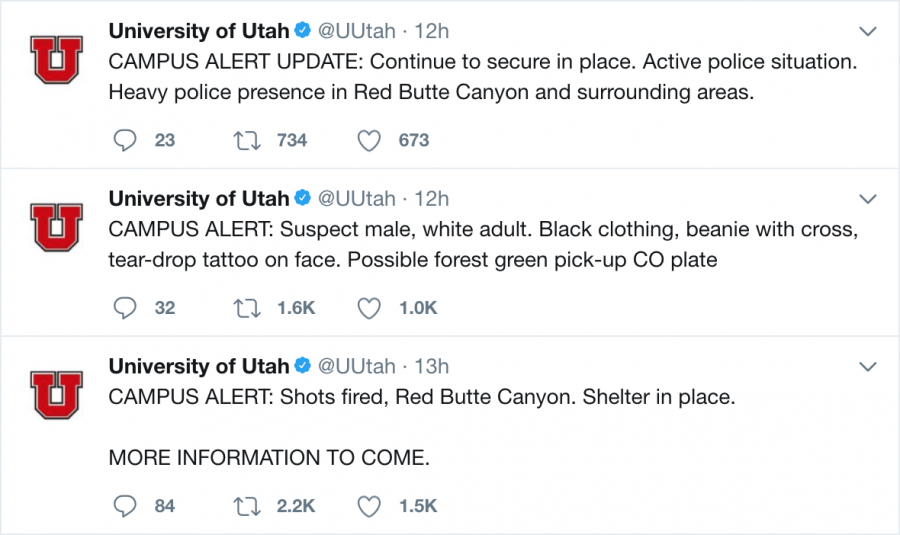Ordinarily, Halloween does not feel this pervasively silent. Nor does it have the immense weight of remorse that the University of Utah community is experiencing today. On October 30, 2017, ChenWei Guo — an international student from China — passed away after receiving a gunshot wound to the head. While authorities searched for 24 year-old Austin Boutain, who reportedly tried to hijack Guo’s vehicle near the gate in Red Butte Canyon, the astonishingly quick response is worth recognizing.
Immediately after shots rang out at 9:00 p.m., the U sent a series of warnings using the “Campus Alert” system, which was tested on October 12, 2017. Traditional messaging to thousands of cellular devices requires a significant amount of time; thankfully, the U community aided itself online. Within seconds after the shooting, I received a flood of messages from concerned family members who were well removed from the incident. Social media had alerted them to the events well before any news station arrived on the scene.
Snapchat’s mapping feature, which demonstrated its potential during Hurricane Harvey, was used to locate loved ones in the north region of campus. Police units scoured Gateway Heights, Shoreline Ridge and the surrounding medical facilities. Witnesses communicated the perceived whereabouts of the shooter instantaneously and police attempted to narrow down Boutain’s location. Thankfully, this is where the conjunct between online and traditional communication systems crescendos magnificently.
Online police scanner feeds, which were rapidly exchanged between students, kept those willing to listen updated on the situation in real time. Some even relayed these conversations to others on Facebook and Twitter, ensuring that a steady stream of information kept circulating. The U, which has invested heavily into its online presence, sent crucial updates that reached thousands of concerned individuals.
There was also a tremendous amount of work performed by students, such as Elise Bailey, Emily Anderson and Steven Morgan, who covered the event for this publication.
Facebook undoubtedly reigned supreme last night, providing the greatest access to information available. The official U class pages became information hubs. Furthermore, students under lockdown orders could “check-in” as safe — providing comfort for parents —and maintaining a link to the outside world. The truly staggering response from students last night was essentially a complex web of interaction, with a rapid exchange of information between various nodes. Without social media, police and university authorities would have been limited to standard communication channels, which takes several minutes to send alerts.
Whenever incidents of violence occur, individuals realize that evil strikes unexpectedly and rather close. Last night, the U demonstrated a perfect response to a senseless shooting. If you were not informed about the active shooter situation, please register your cellphone number through CIS to receive emergency notifications. Additionally, follow the U on Facebook, Twitter and Instagram to stay updated in real time.
ChenWei Guo is remembered as a promising pre-computer science student who worked in the International Student and Scholar Services Office as a peer advisor. According to President David Pershing’s statement, the U has been “…in contact with ChenWei’s family in China and they are understandably devastated by the loss of their son. We are working to bring them to Utah as soon as possible…”
Salt Lake City Police Chief Dale Brophy and the U’s Department of Public Safety secured our campus while the situation unfolded. The Salt Lake City Police, Unified Police, West Valley City Police, South Salt Lake Police, Cottonwood Heights Police, West Jordan Police, Utah Highway Patrol and FBI deserve our appreciation for responding to the emergency as well.
The Counseling Center will be open to support students, while Human Resources will provide counseling for staff and faculty.


